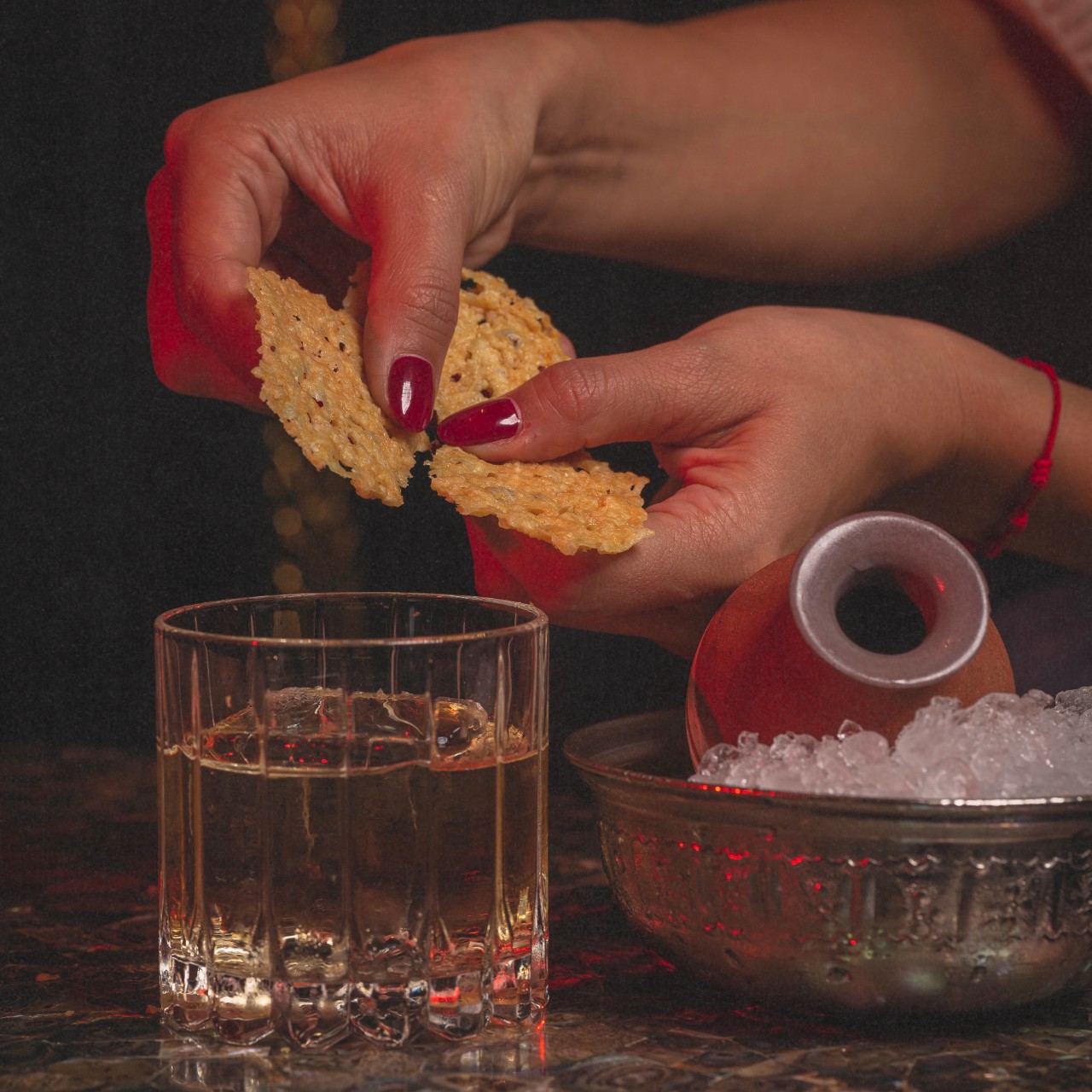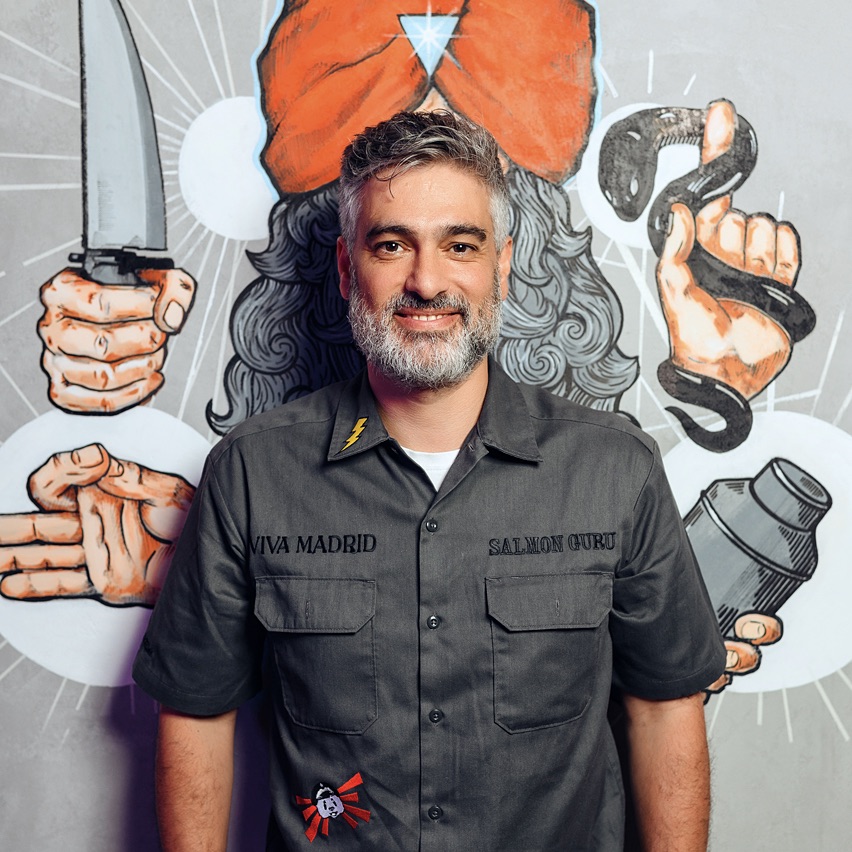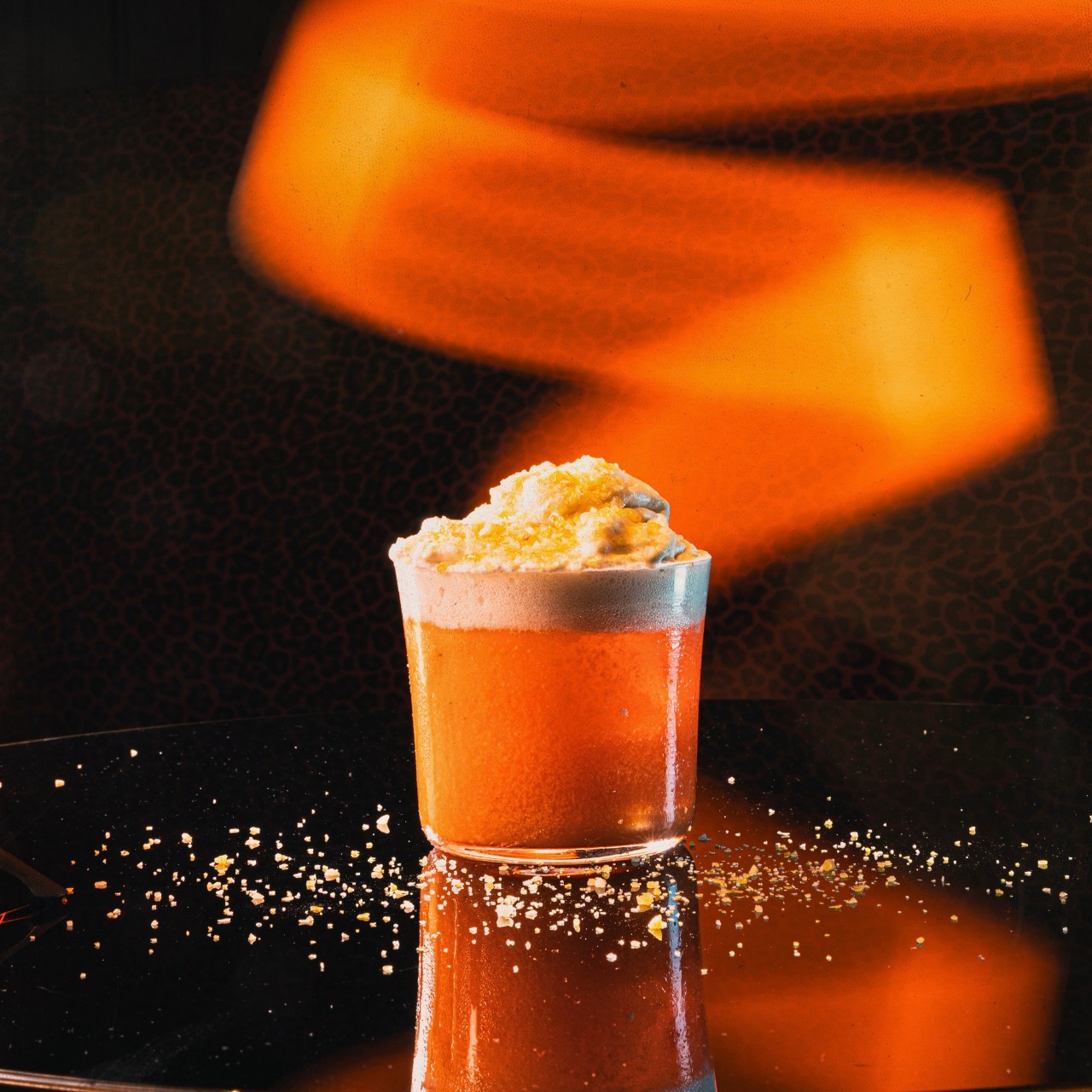by Diego Cabrera - @diegocabrerabartender
.png.transform/rendition-xs/image_image%20(1).png)
Barman Diego Cabrera brings Spanish-made beverages and a long history of innovation behind the bar into his personal memory of some whirlwind years

by Diego Cabrera - @diegocabrerabartender
Spain is experiencing a cocktail boom. As the leader of Salmon Guru, I am proud to share this historic moment that has brought beloved bars in Barcelona, like Paradiso and Sips, to the forefront of global media interest. The fact that both were consecutively named number 1 in The World’s 50 Best Bars in 2022 and 2023 is no coincidence. Salmon Guru has been fortunate to accompany them on this list almost since its opening, representing the vibrant Madrid scene, and has even received the award for the Art of Hospitality on one occasion. Together with other Spanish-speaking bars (Mexico, Colombia, Argentina, etc.), we are demonstrating an unstoppable Latin power in the cocktail bar ecosystem.
As you can see, I am not alone in this. I am joined by stars at their brightest moment. Many come from abroad to develop their careers in Spain as a land of opportunity. This is not coincidental; the roots run deep from an early period of splendor. The world of cocktails is a young and global one where Spain has always made its presence known. When everything seemed to be happening in the Americas—mixed drinks originated in the United States in the late 19th century, and with Prohibition, the focus shifted to Cuba—a handful of pioneers paved the way. After crossing the Atlantic, Perico Chicote and Miguel Boadas, our first bar stars, established themselves in their small empires in Madrid and Barcelona. Filled with dreams and half-combinations, these Spanish cocktail masters became influential personalities of their time. The bartender wore a bow tie and was respected; he had power.

But the bartender has always needed something more than charisma. To put it simply, I wouldn’t be who I am without Sherry wine. Because, despite the fact that bartending has always been a cosmopolitan affair, the identity of the place is on the rise. Any cocktail made with a Spanish product is something special, whether enjoyed in Tokyo or Bogotá.
Spanish Identity
Salmon Guru was the first bar to showcase that Spanish gastronomy isn’t just solid with cocktails presented to the world that were made with Spanish products, like cava. We’ve long collaborated with Pacharán Navarro to showcase its versatility in cocktails: we created a julep in a metal cup, which was included in one of Salmon’s first menus. Whenever we travel to a new place, we always bring a bottle of Brandy de Jerez or any of the wines from the Marco de Jerez. Our relationship with Spanish products is real. We specialize in combining exoticism with national identity. We mix pisco or mezcal, papaya or yuzu, but we never give up sherry. Our Coffee Break includes Lepanto brandy and La Vera sweet pimentón. For the Journey of Flavour, we use oloroso, and for Old School Funny, one of our Signature cocktails, we incorporate amontillado from the solera systems we’ve cherished for years.
We are a part of Marca España, inside and outside our bars, where we use these products that set us apart. After the La Palma volcano disaster, we introduced a cocktail made with plátano de Canarias wine, which has stayed with us ever since. Ritual Banana is really close to Ultramarino, another of our classics, with manzanilla and submerged in a marine amphora.
During my visit to the DYC distillery, a whiskey made in Segovia (Castile- León) that rivals the best Scottish ones, I was amazed by its history and infrastructure. We’re equally interested in Spanish honey. After working with La Moderna Apicultura, the oldest honey shop in Spain, we sponsored our own beehive in Montgó Natural Park (Alicante, Valencian Community). We’re excited after receiving the first batch to make mead, a starting point for further exploring local projects. We’re constantly asking ourselves how Salmon Guru can be a platform to stimulate our surroundings.

Around the World
Let's return to our secret weapon from the very origins of cocktail culture. The true Sherry Revolution is taking place beyond our borders. In the bars of Japan, thanks to stellar bartenders like Shingo Gokan. Or in Singapore, where Bodegas Barbadillo and Lustau are part of the menu at Jigger & Pony. When we went to Kenya, the folks at Hero Bar in Nairobi asked us for some of these highly valued bottles. When they tasted the brandy, it blew their minds. My friend Aarón Díaz from Carnaval in Lima makes a Bamboo cocktail with Tío Pepe Fino. The last time he visited, his only request was to visit Jerez. New York has always had a love affair with fortified wines. At Employees Only, in addition to some Tempranillo from Ribera del Duero, they recommend dessert wines like PX from González Byass and serve a drink with fino, gin, basil, and rhubarb. The new Dante NYC, in the West Village, leans more toward Spanish aperitifs than Italian ones, offering an Old Fashioned with Lustau Palo Cortado and a Boozy Affogato with rum and PX.
At Mercado Little Spain in New York, the options multiply. What a selection of fortified wines, orange wines, and native varieties, from Malvasía to Listán Negro! At the vermouth bar, they serve anchovies, gildas, jamón, and typical tapas. They offer vermouths like Martínez Lacuesta, Yzaguirre, or González Byass La Copa, which they also use in cocktails like the Martínez, Paloma, or Negroni, an even Asturian cider. This is the strength of our products, which allows us at Salmon Guru Dubai to be as distinctive as we will be in our upcoming bar in Milan.

Constant Evolution
Meanwhile, an unlikely ally emerged: the gin and tonic, an Anglo-Saxon drink that Spain has made its bar flag. It changed from the ritual of ice to imposing the ‘premium’ concept before modifying the experience. We give our gin and tonics a Spanish flare, using mediterranean gins as Gin Mare, or Xoriguer from Menorca (Balearic Islands), which is also used for a classic local cocktail, the Pomada (made with gin and lemonade). Consumers found a new friendly and cool drink, and spaces began to replicate as preparation moved into homes. It was at this time that cocktails regained relevance. We had to offer new stimuli, and the cocktail bar ceased to be merely a meeting place to add atmosphere, music, design, and tableware.
Spain has the precedent of gastronomy, a shortcut that allows beverages not just to be served but to undergo a lengthy process over days or months to reach a wider audience. This dynamism in the scene reflects an unprecedented spirit of community. Bartenders share recipes and techniques, which makes us better. In the past, bars expressed themselves inwardly, wary and introverted; today, they communicate outwardly as vibrant places eager to share their innovations with the world. We, once self-taught or amateur, contribute to our professionalization to become ambassadors for our cities. We wonder: is it possible for a cocktail, this sophisticated drinking experience, to help change our increasingly narrow world?
If someone were to ask me about the golden age of cocktails, I would say that an era has a beginning and an end, and it’s impossible to place a limit on this moment. The Spanish cocktail is here to stay.